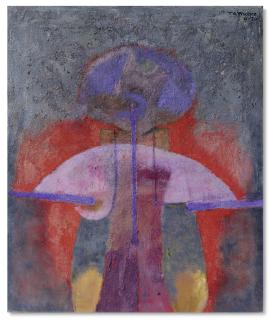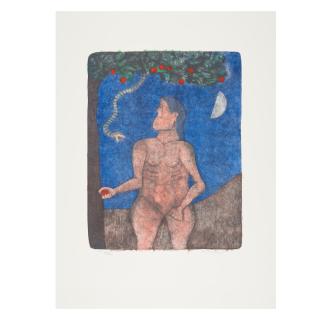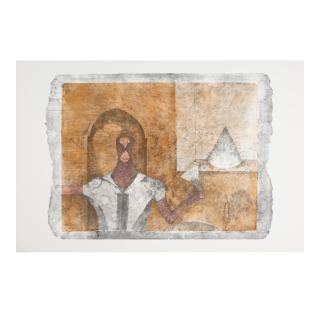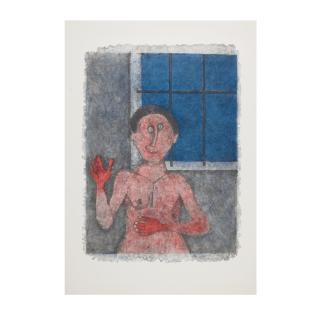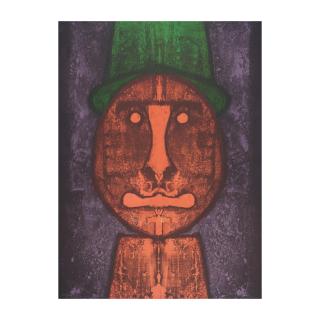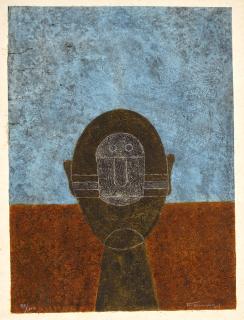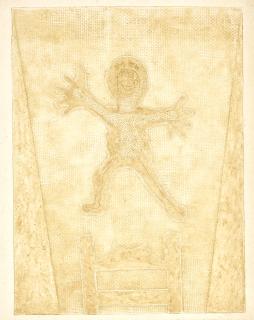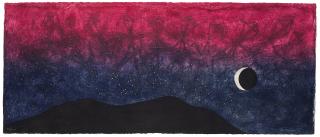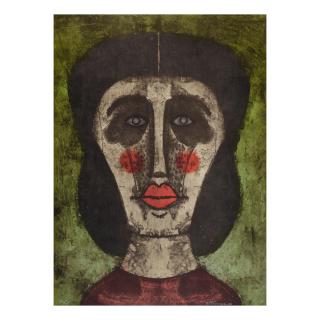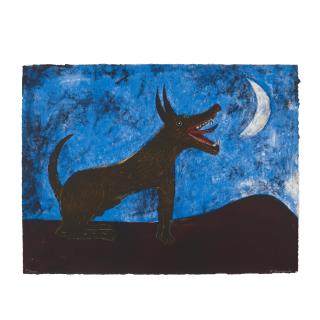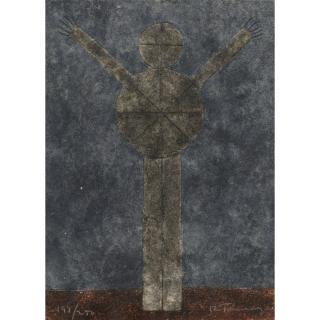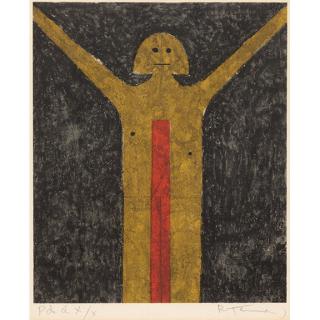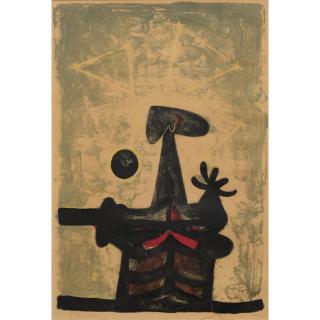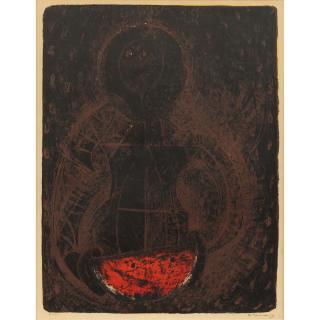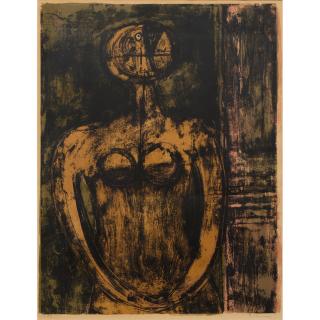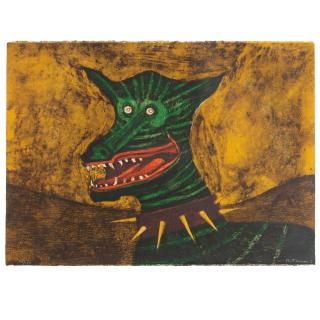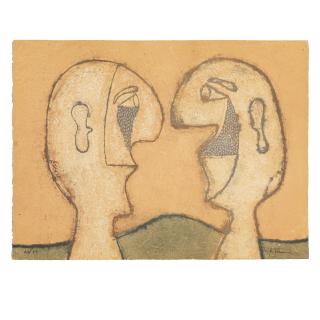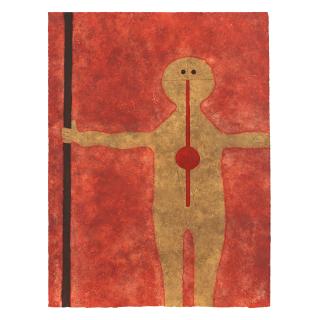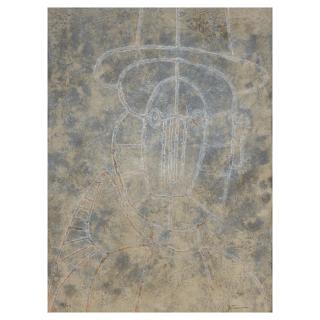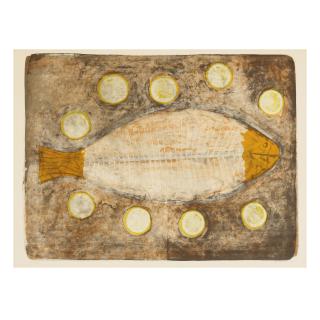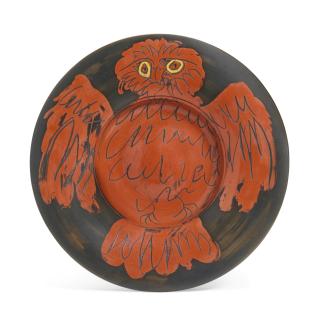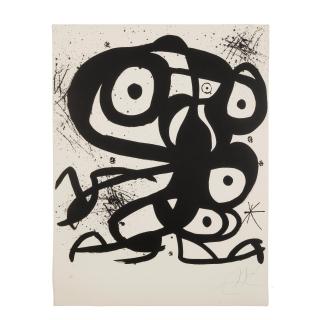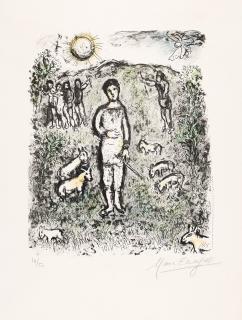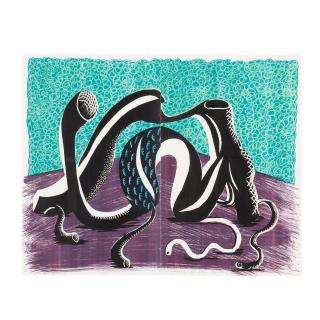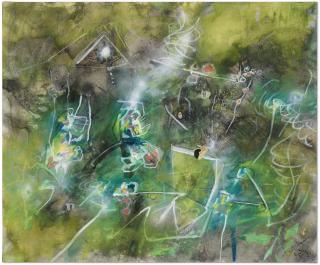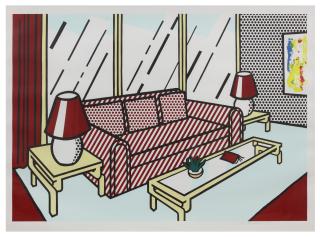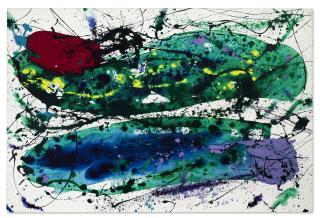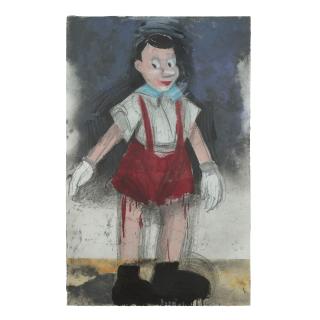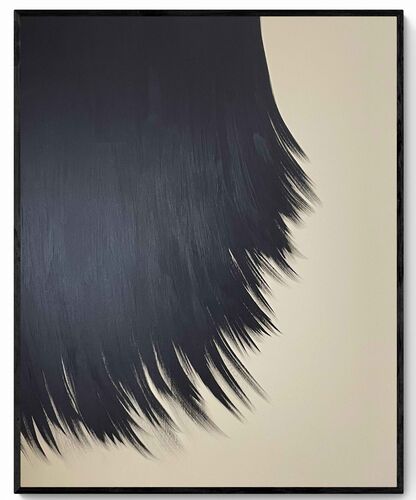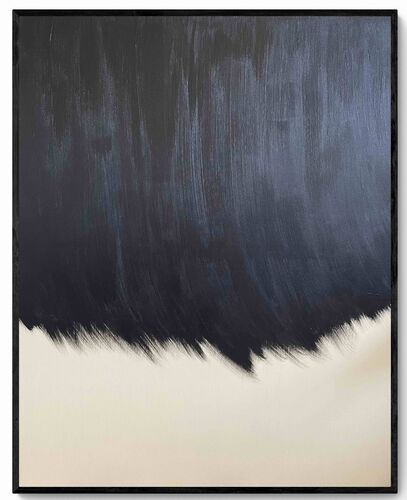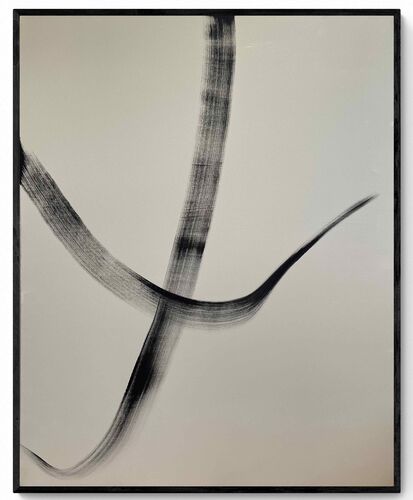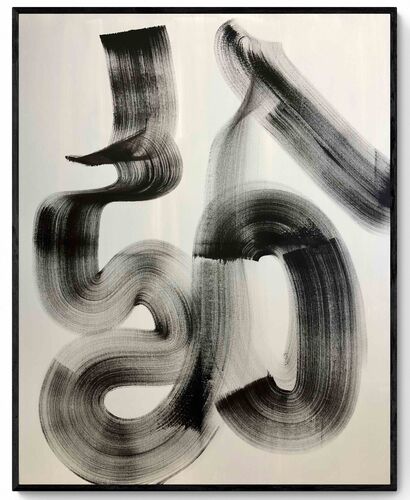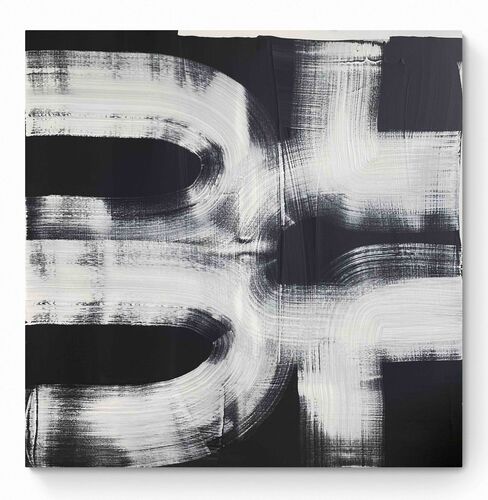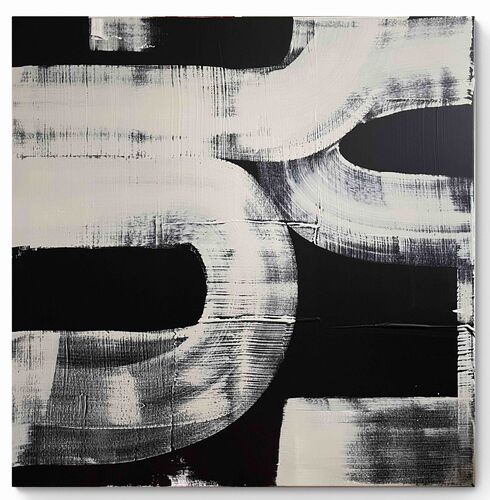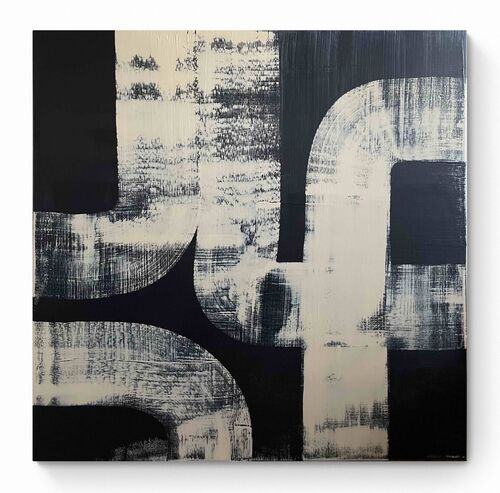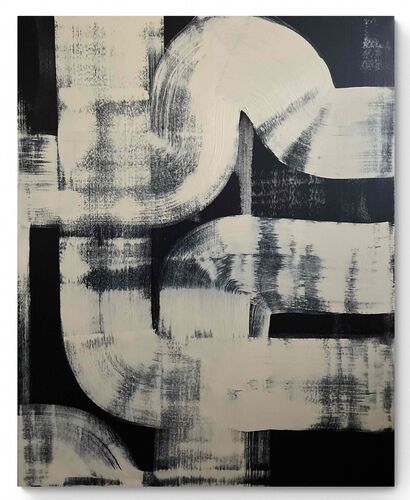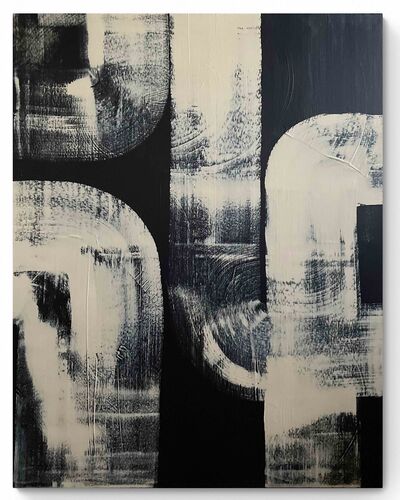Rufino Tamayo 1899 - 1991
The artist Rufino Tamayo
- Mexican painter and graphic artist who spent more than 20 years in the USA.
- Influenced by Cubism, Surrealism and Expressionism as well as folkloric motifs of Mexican natives.
- Namesake of the Museo Tamayo Arte Contemporáneo, which houses Tamayo's collection of modern art.
Rufino Tamayo, born on 26 August 1899 in Oaxaca de Juárez (Mexico) as Rufino Arellanes Tamayo, was a Mexican painter and graphic artist with Zapotec ancestry. After the death of his mother he moved to Mexico City, studied there at the Academia de San Carlos from 1915 and from 1917 onwards was a pupil of Leandro Izaguirre and Roberto Montenegro. Four years later, in 1921, he headed the Ethnographic Drawing Department at the Museo Nacional de Antropologia for five years - this is where his interest in pre-Columbian art developed. During an extended stay in New York between 1926 and 1928, Tamayo encountered the modern art of European painters such as Pablo Picasso, Georges Braque and Henri Matisse, who had a lasting influence on his own work.
From 1928 to 1930, Tamayo taught at the Escuela Nacional de Artes Plásticas in Mexico City before moving to New York in the 1930s, where he lived for twenty years. His participation in the 1950 Venice Biennale brought him international recognition and he designed several murals for the National Palace of Fine Arts in Mexico City as well as for UNESCO in Paris. In 1959, he participated in documenta II and moved back to Mexico the same year, where he founded the Museo Rufino Tamayo for his collection of pre-Columbian art.
In 1981, the Museo Tamayo Arte Contemporáneo was opened in Mexico City, where Tamayo's collection of modern art can be found. During his career as an artist, Tamayo's work was exhibited internationally, including at the Museo Nacional Centro de Arte Reina Sofia (Madrid), the Phillips Collection (Washington, D.C.) and the Solomon R. Guggenheim Museum (New York City). Rufino Tamayo died on 24.06.1991 in Mexico City.
In addition to large-format murals, Rufino Tamayo also experimented with the production of iron and bronze sculptures. His work is characterised primarily by bright, bold colours and textured surfaces with which he depicts his motifs in a symbolic, stylised or semi-abstract manner. Strongly influenced by currents such as Cubism, Surrealism and Expressionism, Tamayo combined the styles of modern European painting with folkloric motifs of Mexican natives in his works. In this way, he set himself apart from Muralismo, a movement that emerged in the 1920s after the Mexican Revolution and was the predominant movement in Mexico at the time.
Der Künstler Rufino Tamayo
- Mexikanischer Maler und Grafiker, der mehr als 20 Jahre in den USA verbrachte.
- Geprägt von Kubismus, Surrealismus und folkloristischen Motiven mexikanischer Einwohner.
- Namensgeber des Museo Tamayo Arte Contemporáneo.
Rufino Tamayo, geboren am 26.08.1899 in Oaxaca de Juárez (Mexiko) als Rufino Arellanes Tamayo, war ein mexikanischer Maler und Grafiker mit zapotekischen Vorfahren. Nach dem Tod seiner Mutter zog er nach Mexiko-Stadt, lernte dort ab 1915 an der Academia de San Carlos und war ab 1917 Schüler von Leandro Izaguirre und Roberto Montenegro. Vier Jahre darauf, im Jahre 1921 leitete er am Museo Nacional de Antropologia fünf Jahre lang die Abteilung für Ethnographische Zeichnung – hier entwickelte sich sein Interesse an präkolumbischer Kunst. Während eines längeren Aufenthalts in New York zwischen 1926 und 1928 begegnete Tamayo der modernen Kunst europäischer Maler wiePablo Picasso, Georges Braque und Henri Matisse, die sein eigenes Schaffen nachhaltig beeinflussten.
Von 1928 bis 1930 lehrte Tamayo in Mexiko-Stadt an der Escuela Nacional de Artes Plásticas, bevor er in den 1930ern nach New York zog, wo er zwanzig Jahre lang wohnte. Seine Teilnahme an der Biennale 1950 in Venedig brachte ihm internationale Anerkennung ein und er designte verschiedene Wandmalereien für den National Palace of Fine Arts in Mexiko-Stadt sowie für die UNESCO in Paris. 1959 nahm er an der documenta II teil und zog im selben Jahr zurück nach Mexiko, wo er für seine Sammlung an präkolumbischer Kunst das Museo Rufino Tamayo gründete.
In Mexiko-Stadt wurde 1981 dann Museo Tamayo Arte Contemporáneo eröffnet, in welchem Tamayos Sammlung moderner Kunst zu finden ist. Im Verlauf seiner Künstlerkarriere wurden Tamayos Werke international ausgestellt, darunter im Museo Nacional Centro de Arte Reina Sofia (Madrid), in der Phillips Collection (Washington, D.C.) und im Solomon R. Guggenheim Museum (New York City). Rufino Tamayo starb am 24.06.1991 in Mexiko-Stadt.
Neben großformatigen Wandmalereien experimentierte Rufino Tamayo auch mit der Fertigung von Eisen- und Bronzeskulpturen. Seine Arbeit zeichnet sich vor allem durch leuchtende, kräftige Farben und texturierte Oberflächen aus, mit denen er seine Motive auf symbolische, stilisierte oder semiabstrakte Weise darstellt. Stark beeinflusst von Strömungen wie dem Kubismus, Surrealismus und Expressionismus kombinierte Tamayo in seinen Werken die Stile moderner europäischer Malerei mit folkloristischen Motiven mexikanischer Ureinwohner. Damit grenzte er sich zum Muralismo ab, einer Bewegung, die in den 1920ern nach der Mexikanischen Revolution entstand und im Mexiko seiner Zeit die vorherrschende Strömung war.
Rufino Tamayo in a nutshell
Tamayo's interest in traditional Mexican and pre-Columbian art had a decisive influence on his extraordinary works. They resonated with the public, but Tamayo had a difficult time among fellow artists. He had concerns that the Mexican Revolution was good for the state, and his paintings did not deal with then-current political issues. This made him an artistic outsider in Mexico. Tamayo moved to New York in 1926, hoping to work more freely as an artist. After two years he returned to Mexico, but from the mid-1930s he remained in New York for over 10 years. From 1949 he lived in Paris for 10 years before returning to Mexico for good. By this time he was a world-famous painter, the political situation was a completely different one, and many enthusiastic supporters of the revolution of that time, such as Diego Rivera, had already died.
One of the defining features of Rufino Tamayo's art is his masterful synthesis of modernist artistic techniques with indigenous Mexican influences. While his contemporaries were heavily influenced by European art movements such as Cubism and Surrealism, Tamayo sought to incorporate elements of Mexican folk art and Pre-Columbian traditions into his work. This fusion resulted in a unique visual language that simultaneously embraced modernism and celebrated Mexico's rich cultural heritage.
Tamayo's art is characterized by a vibrant and expressive color palette. He skillfully used bold and vivid colors to evoke emotions and create a sense of dynamism within his compositions. From earthy tones to intense hues, his use of color added depth and visual impact to his paintings, drawing viewers into the world he created on the canvas.
Tamayo's art often exhibits a sculptural quality, with figures and objects depicted in a three-dimensional manner. He employed bold outlines and strong contours, enhancing the tactile quality of his subjects. Tamayo's work often incorporates symbolic elements and references to Mexican mythology and folklore. He explored themes such as identity, spirituality, and the human condition through the lens of Mexican cultural traditions. His art transcended mere representation, offering deeper insights into the collective consciousness and cultural history of Mexico.
Rufino Tamayo mastered many printing techniques such as woodcuts, lithographs and etchings. Mixography is a printing technique that Tamayo invented himself in 1974 in collaboration with the printer Luis Remba. The process of creation is long and varied. For a mixography, Tamayo applied various materials to a support in a collage-like manner, which he then tore or carved into to achieve a higher relief. A casting mold of the artwork is used to make a copper plate. This is inked and transferred to a paper pulp by means of a press. This creates a paper print with high relief and textures.
Yes, a woman found it in the trash on the streets of New York in 2003. She didn't know much about art, but the painting Tres Personajes (1970) left her with the impression of high quality, so she took it. The painting had been purchased by a Houston man in 1977, and 10 years later it was stolen when he moved. In November 2007, it fetched the price of just over $1 million at a Sotheby's auction.
Häufige Fragen zu Rufino Tamayo
Tamayos Interesse an traditioneller mexikanischer und präkolumbianischer Kunst beeinflusste entscheidend seine außergewöhnlichen Werke. Sie kamen beim Publikum an, doch unter Künstlerkollegen hatte Tamayo einen schweren Stand. Er hatte Bedenken, dass die mexikanische Revolution dem Staat gut tut und seine Bilder befassen sich nicht mit damals aktuellen politischen Fragen. Dies machte ihn in Mexiko zum künstlerischen Außenseiter. Tamayo zog 1926 nach New York in der Hoffnung, dort freier künstlerisch arbeiten zu können. Nach zwei Jahren kehrte er nach Mexiko zurück, aber ab Mitte der 1930er blieb er für über 10 Jahre in New York. Ab 1949 lebte er 10 Jahre in Paris, bevor er für immer nach Mexiko zurückkehrte. Zu diesem Zeitpunkt war er ein weltberühmter Maler, die politische Lage war eine völlig andere und viele begeisterte Anhänger der Revolution von damals, etwa Diego Rivera, waren bereits verstorben.
Eines der charakteristischen Merkmale der Kunst von Rufino Tamayo ist seine meisterhafte Synthese aus modernistischen künstlerischen Techniken und einheimischen mexikanischen Einflüssen. Während seine Zeitgenossen stark von europäischen Kunstströmungen wie dem Kubismus und dem Surrealismus beeinflusst waren, versuchte Tamayo, Elemente der mexikanischen Volkskunst und präkolumbianischer Traditionen in sein Werk zu integrieren. Diese Verschmelzung führte zu einer einzigartigen Bildsprache, die gleichzeitig die Moderne aufgreift und das reiche kulturelle Erbe Mexikos feiert.
Tamayos Kunst zeichnet sich durch eine leuchtende und ausdrucksstarke Farbpalette aus. Er setzte gekonnt kräftige und lebhafte Farben ein, um Emotionen hervorzurufen und ein Gefühl der Dynamik in seinen Kompositionen zu erzeugen. Von erdigen Tönen bis hin zu intensiven Schattierungen verlieh er seinen Gemälden Tiefe und visuelle Wirkung und zieht Betrachtende in die von ihm geschaffene Welt auf der Leinwand hinein.
Tamayos Kunst weist oft eine skulpturale Qualität auf, mit Figuren und Objekten, die auf dreidimensionale Weise dargestellt sind. Er verwendet kühne Umrisse und starke Konturen, die die taktile Qualität seiner Motive verstärken. Tamayos Werke enthalten oft symbolische Elemente und Verweise auf die mexikanische Mythologie und Folklore. Er erforschte Themen wie Identität, Spiritualität und das menschliche Dasein durch die Brille der mexikanischen kulturellen Traditionen. Seine Kunst geht über die reine Darstellung hinaus und bietet tiefere Einblicke in das kollektive Bewusstsein und die Kulturgeschichte Mexikos.
Rufino Tamayo beherrschte viele Drucktechniken wie Holzschnitte, Lithografien und Radierungen. Die Mixografie ist eine Drucktechnik, die Tamayo 1974 selbst in Zusammenarbeit mit dem Drucker Luis Remba erfand. Der Entstehungsprozess ist lang und vielfältig. Für eine Mixografie brachte Tamayo auf einen Träger diverse Materialien collagenartig auf, die er dann zerriss oder hineinritzte, um ein höheres Relief zu erreichen. Eine Gussform der Druckvorlage dient zur Herstellung einer Kupferplatte. Diese wird eingefärbt auf mittels einer Presse auf einen Papierbrei übertragen. So entsteht ein Papierdruck mit hohem Relief und Texturen.
Rufino Tamayo gründete das nach ihm benannte Museum selbst. Es existiert seit 1981 und ist eines der wichtigsten Museen für moderne und zeitgenössische Kunst in Mexiko. Neben der ständig erweiterten Kunstsammlung ist auch das Tamayo Archiv von Interesse. Es besteht aus über 5.000 persönlichen Fotografien, Fotografien von Tamayos Kunstwerken, Zeitungsausschnitten und anderen Dokumenten, die seine Frau Olga sammelte. Sie geben detaillierte Einblicke in das Leben des berühmten Malers.
Das Museum befindet sich im Chapultepec Park in Mexiko-Stadt. Es ist, nach Tamayos Wunsch, eingebettet in eine Umgebung, die von natürlicher Schönheit und gleichzeitig von hoher kultureller Bedeutung ist. Im Jahr 2011 schloss das Museum für ein Jahr für Um- und Erweiterungsbauarbeiten.
Ja, eine Frau fand es 2003 in den Straßen New Yorks im Müll. Sie kannte sich nicht gut mit Kunst aus, doch das Bild Tres Personajes (1970) hinterließ bei ihr den Eindruck hoher Qualität, weshalb sie es mitnahm. Das Gemälde hatte ein Mann aus Houston 1977 gekauft, 10 Jahre später wurde es bei seinem Umzug gestohlen. Im November 2007 erzielte es bei einer Auktion von Sotheby’s den Preis von etwas über 1 Million US-Dollar.

